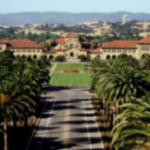The 20 Best Colleges in the Northeast
What’s Covered:
Many of the nation’s top schools are located in the Northeast. With rich histories, beautiful campuses, and rigorous academic programs, Northeastern colleges offer a great deal to prospective students. The region is home to all eight Ivy League institutions, but it’s also a hub for prestigious liberal arts colleges. Notably, it includes the NESCAC—the New England Small College Athletic Conference—often referred to as the “Little Ivies.”
Our Ranking Methodology
Below is a list of the 20 best colleges in the Northeast. The list was constructed with a focus on school quality, outcomes, and return on investment (ROI), along with considering a host of other factors such as retention rate, selectivity, endowment per student, student-faculty ratio, median earnings, and cost of attendance. You can find CollegeVine’s rankings in their entirety here.
The 20 Best Colleges in the Northeast
1. Harvard University
Location: Cambridge, MA
Acceptance Rate: 4%
Middle 50% SAT: 1510-1580
Middle 50% ACT: 34-36
Undergraduate Enrollment: 7,038
Harvard University isn’t just the best university in New England; it’s arguably the best university in the world. Harvard didn’t build its prestigious reputation overnight, it’s the oldest university in the nation—it was founded in 1636, almost a century and a half before the U.S. declared independence.
Harvard is a residential school, with 98% of undergraduates living on campus, and its house system (12 houses that create small, tight-knit communities within the broader college) is the foundation of the Harvard experience.
Learn more about Harvard University and what it takes to get accepted.
2. Yale University
Location: New Haven, CT
Acceptance Rate: 4%
Middle 50% SAT: 1480-1560
Middle 50% ACT: 33-35
Undergraduate Enrollment: 6,814
Yale is one of the oldest and most respected universities in the U.S. The university dates back to 1701 and three U.S. Presidents were undergraduates at the school (Yale is second to Harvard for producing Presidents).
Yale is known for its clubs and groups like the Skull and Bones—something all three former Presidents were members of—the oldest of several secret societies at Yale (it was founded in 1832). Looking for something a bit more lighthearted? The Yale Whiffenpoofs are the oldest a cappella group in the country (founded in 1909) and have become one of the college’s most celebrated traditions.
Learn more about Yale University and what it takes to get accepted.
3. Princeton University
Location: Princeton, NJ
Acceptance Rate: 5%
Middle 50% SAT: 1500-1560
Middle 50% ACT: 34-35
Undergraduate Enrollment: 5,813
Appearing in classic novels, like F. Scott Fitzgerald’s This Side of Paradise, has helped Princeton earn a reputation for being preppy, white, and male, but the school has come a long way since Fitzgerald’s time. The Class of 2029 is 51% women, and approximately half of all undergraduates are people of color.
One thing from Fitzgerald’s time that remains an important part of the Princeton experience is its eating clubs, which are written about in This Side of Paradise. Eating clubs are technically unaffiliated with the college, but play a substantial role in the social life of students.
Learn more about Princeton University and what it takes to get accepted.
4. Massachusetts Institute of Technology (MIT)
Location: Cambridge, MA
Acceptance Rate: 5%
Middle 50% SAT: 1520-1570
Middle 50% ACT: 34-36
Undergraduate Enrollment: 4,535
MIT is known as the world’s best university for technical education due to its renowned engineering and physical sciences programs. Since its founding in 1861, the school has spurred rapid advancement via top-notch academics that facilitate revolutionary innovations. MIT culture prides itself on creative nerdiness, as students put their technical skills to use in unique ways. For example, students at MIT bond through practical jokes involving hacking and making liquid nitrogen ice cream in the residential courtyards.
In addition to its outstanding professors and vibrant campus community, MIT accelerates students’ success after graduation, as a diploma from such a highly respected institution is appealing to many employers.
Learn more about MIT and what it takes to get accepted.
5. University of Pennsylvania | UPenn
Location: Philadelphia, PA
Acceptance Rate: 5%
Middle 50% SAT: 1510-1570
Middle 50% ACT: 34-36
Undergraduate Enrollment: 10,013
Benjamin Franklin was more than a founding father to the nation; he also played a substantial role in the establishment of UPenn and served as the school’s first president. Founded in 1740, UPenn was different from other colleges at the time—it aimed to train young people for leadership in business, government, and public service, rather than for the Christian Ministry—and shares some commonalities with a modern liberal arts education.
Like other Ivy League schools, UPenn has a reputation for excellent academics, but it’s also known for its exciting atmosphere outside of the classroom, which has earned it the moniker “the social Ivy.”
Learn more about UPenn and what it takes to get accepted.
6. Brown University
Location: Providence, RI
Acceptance Rate: 5%
Middle 50% SAT: 1510-1560
Middle 50% ACT: 34-35
Undergraduate Enrollment: 7,910
An open curriculum has been a staple of a Brown education for over 50 years. Brown’s open curriculum allows students to develop a personalized course of study and provides them with the freedom to pursue the fields they’re most passionate about.
In addition to its open curriculum, Brown is gaining recognition as a “no-loan college.” Brown has eliminated packaged loans from all undergraduate financial aid awards and will meet 100% of every student’s demonstrated financial need through scholarships and work-study programs.
Learn more about Brown and what it takes to get accepted.
7. Franklin W. Olin College of Engineering
Location: Needham, MA
Acceptance Rate: 22%
Middle 50% SAT: 1480-1560
Middle 50% ACT: 34-35
Undergraduate Enrollment: 402
In a little under two decades (the college’s first commencement was in 2006), Franklin W. Olin College of Engineering has become one of the country’s finest engineering schools. The college has a unique culture—students, faculty, and staff learn alongside one another. At the heart of a Franklin W. Olin College of Engineering education are projects, which the school uses to reinforce traditional engineering skills and encourage design and entrepreneurial thinking.
Learn more about Franklin W. Olin College of Engineering and what it takes to get accepted.
8. Dartmouth College
Location: Hanover, NH
Acceptance Rate: 5%
Middle 50% SAT: 1500-1570
Middle 50% ACT: 33-35
Undergraduate Enrollment: 4,570
Dartmouth College has a long and illustrious history. It’s one of the nine Colonial Colleges—nine institutions of higher education chartered before the American Revolution—and a member of the Ivy League.
Dartmouth has earned a sterling reputation for its rigorous academics and its students’ ability to apply that knowledge across the globe—275 students and young alumni have received Fulbright scholarships. In addition to academics, Dartmouth students are passionate about the outdoors; the college is home to the largest and oldest (founded in 1909) college outing club in the country.
Learn more about Dartmouth and what it takes to get accepted.
9. Cornell University
Location: Ithaca, NY
Acceptance Rate: 8%
Middle 50% SAT: 1510-1560
Middle 50% ACT: 33-35
Undergraduate Enrollment: 16,128
Cornell has numerous distinctions from its peers in the Ivy League: it’s the youngest (founded in 1865), has the largest undergraduate enrollment, and is commonly thought of as the easiest to get into.
Students at Cornell are treated to a wide variety of areas to study. The university offers more than 4,000 courses and nearly 80 majors through its seven undergraduate colleges and was the first university to offer a degree in journalism and the first to teach modern Far Eastern languages. Cornell’s College of Agriculture and Life Sciences is one of the top ag programs in the U.S.
Learn more about Cornell and what it takes to get accepted.
10. Columbia University
Location: New York, NY
Acceptance Rate: 4%
Middle 50% SAT: 1510-1560
Middle 50% ACT: 34-36
Undergraduate Enrollment: 9.164
Columbia is the oldest institution of higher education in New York and the fifth oldest in the nation—it was founded in 1754 by George II and was originally called King’s College (it was renamed Columbia College after the American Revolution). A Columbia education is centered around its “Core Curriculum,” which exposes students to a wide variety of ideas and perspectives in fields ranging from literature and history to music and art to science.
Outside of the classroom, students can pursue almost any interest in New York City, one of the world’s best cities, which is home to world-class museums, restaurants, entertainment, and athletics.
Learn more about Columbia and what it takes to get accepted.
11. Williams College
Location: Williamstown, MA
Acceptance Rate: 8%
Middle 50% SAT: 1500-1560
Middle 50% ACT: 34-35
Undergraduate Enrollment: 2,101
Williams College was founded as a men’s college but became coeducational in the 1960s. The private liberal arts school boasts small class sizes, individualized attention from professors, and a tight-knit community.
The school uniquely operates on a 4-1-4 schedule, where students take four classes in the fall and four in the spring, as well as one additional course (taken pass/fail) during January. Williams is a school that meets 100% of a student’s demonstrated need for all four undergraduate years.
Learn more about Williams and what it takes to get accepted.
12. Bowdoin College
Location: Brunswick, ME
Acceptance Rate: 7%
Middle 50% SAT: 1470-1540
Middle 50% ACT: 33-35
Undergraduate Enrollment: 1,881
Bowdoin is a private liberal arts college in Maine that consistently ranks among the nation’s top liberal arts colleges. Because the college is small, there is a strong sense of community between students, staff, and professors.
Bowdoin is a college built on history—chartered in 1794—that emphasizes its foundational value of pursuing “The Common Good.” Students are encouraged by their professors and peers to use their talents in a way that benefits their community.
Learn more about Bowdoin and what it takes to get accepted.
13. Johns Hopkins University
Location: Baltimore, MD
Acceptance Rate: 6%
Middle 50% SAT: 1530-1560
Middle 50% ACT: 34-36
Undergraduate Enrollment: 6,356
Johns Hopkins is a selective private research university that is particularly well known for its medical opportunities and its important role in medical research. While JHU students in all fields are successful, a large portion of the student body pursues the pre-med track, and pre-med graduates show an 85% medical school acceptance rate.
Another prestigious program at JHU is the biomedical engineering program, which often ranks as the best in the nation. Having an undergraduate degree from JHU will prove valuable when searching for a job or applying for graduate school.
Learn more about Johns Hopkins and what it takes to get accepted.
14. Amherst College
Location: Amherst, MA
Acceptance Rate: 9%
Middle 50% SAT: 1500-1560
Middle 50% ACT: 33-35
Undergraduate Enrollment: 1,914
Amherst College, a small liberal arts school in the Connecticut River valley, is Massachusetts’ third-oldest higher education institution. Amherst itself is a small college town, but the Boston and New York areas are easily accessible via train.
The college is part of the Five College Consortium—along with Hampshire College, Mount Holyoke College, Smith College, and UMass Amherst—which gives students access to courses and resources offered at four other outstanding universities. With high-achieving students and brilliant professors, Amherst is renowned for its academic programs.
Learn more about Amherst and what it takes to get accepted.
15. Wellesley College
Location: Wellesley, MA
Acceptance Rate: 14%
Middle 50% SAT: 1470-1550
Middle 50% ACT: 33-35
Undergraduate Enrollment: 2,407
Wellesley, a private women’s college, is a prestigious school that ranks among the nation’s top liberal arts colleges. The school prides itself on its female roots—its buildings are named after women, a majority of the faculty are women, and all past and present students are women.
Wellesley’s alumni network is a unique and important resource for students—they find it easy to connect with graduates and obtain opportunities through those connections. Wellesley is extremely diverse and the college meets 100% of admitted students’ calculated financial needs.
Learn more about Wellesley and what it takes to get accepted.
16. Tufts University
Location: Medford, MA
Acceptance Rate: 11%
Middle 50% SAT: 1480-1540
Middle 50% ACT: 33-35
Undergraduate Enrollment: 7,126
Tufts is a research university with outstanding liberal arts and pre-med programs. The pre-med program at Tufts is known for being academically rigorous and for its renowned professors. Overall, the university is known for providing the personalized attention of a liberal arts college with the resources of a research institution.
The student-to-faculty ratio at Tufts is 10:1, and the average class size is 20 students, which helps students feel supported and valued. Although Tufts is not located in Boston, it sits just five miles away, giving students easy access to the city’s research and job opportunities. Many students describe Tufts as not too big and not too small—and not too urban, yet not too suburban.
Learn more about Tufts and what it takes to get accepted.
17. Swarthmore College
Location: Swarthmore, PA
Acceptance Rate: 7%
Middle 50% SAT: 1500-1550
Middle 50% ACT: 33-35
Undergraduate Enrollment: 1,623
Swarthmore was originally founded by the Quakers but lost its religious affiliation over a century ago. The private liberal arts college is known for its quirky and engaged students, and because Swarthmore’s student body is small, the college fosters a tight-knit community.
Undergraduates at Swarthmore have the unique opportunity to design their own majors and course plans if they so choose. Another unique opportunity offered to students is participating in the Tri-College and Quaker Consortium. Through the Consortium, Swarthmore students can take classes at Haverford College, Bryn Mawr College, and the University of Pennsylvania.
Learn more about Swarthmore and what it takes to get accepted.
18. Georgetown University
Location: Washington, D.C.
Acceptance Rate: 13%
Middle 50% SAT: 1400-1540
Middle 50% ACT: 31-35
Undergraduate Enrollment: 7,833
Georgetown is a research institution in a quaint neighborhood of Washington, D.C. The university has a reputation for exceptional academics and notable school pride. Georgetown students—known as Hoyas—have numerous traditions that create a cohesive spirit on campus. In addition to academic rigor, students are presented with great opportunities due to the university’s location in the D.C. area.
Georgetown’s alumni are known for being strongly involved in undergraduate mentorship, and the university sponsors a speakers series, exposing students to key players in world affairs. Although you don’t have to be Catholic to attend Georgetown, following its Jesuit roots, the university boasts a strong Catholic community and promotes values like integrating learning, faith, and service.
Learn more about Georgetown and what it takes to get accepted.
19. Middlebury College
Location: Middlebury, VT
Acceptance Rate: 11%
Middle 50% SAT: 1450-1530
Middle 50% ACT: 33-35
Undergraduate Enrollment: 2,760
Founded in 1800, Middlebury was the first operating college in Vermont. Its campus is widely regarded as one of the most beautiful in the nation, especially during the autumn months. Middlebury is an innovative liberal arts college with a strong global focus, known for its emphasis on language instruction, international study programs, and experiential learning. Students are often described as happy and friendly, driven more by personal growth than competition with their peers.
Learn more about Middlebury and what it takes to get accepted.
20. Haverford College
Location: Haverford, PA
Acceptance Rate: 12%
Middle 50% SAT: 1470-1540
Middle 50% ACT: 33-35
Undergraduate Enrollment: 1,430
Haverford is a small liberal arts college and a member of the Tri-College and Quaker Consortium, a group of three private liberal arts schools—Bryn Mawr and Swarthmore being the other two—that allow students to take courses and participate in activities at any of the three institutions.
A defining characteristic of Haverford is its honor code, which dates back to 1897 as a system to hold exams without proctors and today holds students accountable for their words and actions and is used to resolve conflicts by engaging in dialogue.
Learn more about Haverford and what it takes to get accepted.
What Are Your Chances of Acceptance?
While each of the colleges listed above has a different average acceptance rate, they’re all selective. It’s great to want to attend selective schools, but it’s also important to create a balanced college list. If possible, a student should apply to eight to ten schools, with about 25% being safety schools, 40% target schools, and 35% reach schools. These categories—safety, target, and reach—are determined by your chances of acceptance at the schools you are applying to.
Because your personal chances of acceptance at these schools may differ from the average acceptance rate, CollegeVine has made it easy to figure out which schools fall into which categories with our free Admissions Chances Calculator. By taking into account your grades, test scores, and extracurriculars, we’ll estimate your odds of acceptance at different schools and give you tips on improving your profile.


